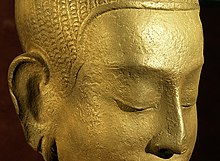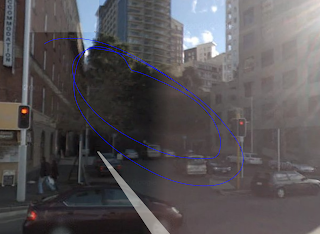Sunday, 31 July 2011
my site (NOT ANYMORE!) see blog further up for update..
This is the site for 'waking up'
It is amongst the trees where the noise is softened and oxygen is created
It is also on an incline with a lot of stairs and a a ramp for pedestrians
What is the difference between architecture and an instalation?
- archi involves all senses
- archi supports human living
- archi improves the quality of life
- archi has a spatial quality -in, out, on, under, through, over etc
- archi is the work of a collective
- archi is used everyday
- archi is engaged in what is not there but also what is there
- archi supports human living
- archi improves the quality of life
- archi has a spatial quality -in, out, on, under, through, over etc
- archi is the work of a collective
- archi is used everyday
- archi is engaged in what is not there but also what is there
Meditation and Buddhism
Meditation refers to any of a family of practices in which the practitioner trains his or her mind or self-induces a mode of consciousness in order to realize some benefit.
Buddhism
Main article: Buddhist meditation

Dynamic tranquility: the Buddha incontemplation.
Buddhist meditation refers to the meditative practices associated with the religion and philosophy of Buddhism. Core meditation techniques have been preserved in ancientBuddhist texts and have proliferated and diversified through teacher-student transmissions. Buddhists pursue meditation as part of the path toward Enlightenment andNirvana.[76] The closest words for meditation in the classical languages of Buddhism are bhāvanā[77] and jhāna/dhyāna.[78]
Buddhist meditation techniques have become increasingly popular in the wider world, with many non-Buddhists taking them up for a variety of reasons. While there are some similar meditative practices — such as breath meditation and various recollections (anussati) — that are used across Buddhist schools, there is also significant diversity. In the Theravāda tradition alone, there are over fifty methods for developing mindfulness and forty for developing concentration, while in the Tibetan tradition there are thousands of visualization meditations.[79] Most classical and contemporary Buddhist meditation guides are school specific.[80]
The Buddha is said to have identified two paramount mental qualities that arise from wholesome meditative practice:
- "serenity" or "tranquillity" (Pali: samatha) which steadies, composes, unifies and concentrates the mind;
- "insight" (Pali: vipassana) which enables one to see, explore and discern "formations" (conditioned phenomena based on the five aggregates).[81]
Through the meditative development of serenity, one is able to suppress obscuring hindrances; and, with the suppression of the hindrances, it is through the meditative development of insight that one gains liberating wisdom.[82]
New Age
Main article: New Age
New Age meditations are often influenced by Eastern philosophy, mysticism, Yoga, Hinduism and Buddhism, yet may contain some degree of Western influence. In the West,meditation found its mainstream roots through the social revolution of the 1960s and 1970s, when many of the youth of the day rebelled against traditional belief systems as a reaction against what some perceived as the failure of Christianity to provide spiritual and ethical guidance.[124] New Age meditation as practiced by the early hippies is regarded for its techniques of blanking out the mind and releasing oneself from conscious thinking. This is often aided by repetitive chanting of a mantra, or focusing on an object.[125]
In Zen Yoga, Aaron Hoopes talks of meditation as being an avenue to touching the spiritual nature that exists within each of us.
At its core, meditation is about touching the spiritual essence that exists within us all. Experiencing the joy of this essence has been called enlightenment, nirvana, or even rebirth, and reflects a deep understanding within us. The spiritual essence is not something that we create through meditation. It is already there, deep within, behind all the barriers, patiently waiting for us to recognize it. One does not have to be religious or even interested in religion to find value in it. Becoming more aware of your self and realizing your spiritual nature is something that transcends religion. Anyone who has explored meditation knows that it is simply a path that leads to a new, more expansive way of seeing the world around us.[126]
Chakras- meditation- relevant to my ideas
Chakra is a concept originating in Hindu texts, featured in tantric and yogic traditions of Hinduism andBuddhism. Its name derives from the Sanskrit word for "wheel" or "turning" (cakraṃ चक्रं [ˈtʃəkrə̃], pronounced [ˈtʃəkrə] in Hindi; Pali: cakka चक्क, Thai: จักระ, Tamil: சக்கரம், Kannada : ಚಕ್ರ, Chinese: 轮,Tibetan: འཁོར་ལོ་; khorlo).[1]
Chakra is a concept referring to wheel-like vortices which, according to traditional Indian medicine, are believed to exist in the surface of the etheric double of man.[2] The Chakras are said to be "force centers" or whorls of energy permeating, from a point on the physical body, the layers of the subtle bodies in an ever-increasing fan-shaped formation. Rotating vortices of subtle matter, they are considered the focal points for the reception and transmission of energies.[3] Different systems posit a varying number of chakras; the most well known system in the West is that of seven chakras.
It is typical for chakras to be depicted as either flower-like or wheel-like. In the former, "petals" are shown around the perimeter of a circle. In the latter, spokes divide the circle into segments that make the chakra resemble a wheel (or "chakra"). Each chakra possesses a specific number of segments or petals.
Texts describing the chakras go back as far as the later Upanishads ( Thai: อุปนิษัทฺส์), for example the Yoga Kundalini Upanishad.
Still waking up
I am going to go with the idea of realisation and waking up to important factors, ideas and feelings in your life that have an impact on your mental, emotional and physical well being.
Saturday, 30 July 2011
Waking up
To me, waking up could mean a few different things
-waking up from sleep at whatever time
-waking up to a realisation
-having an epiphany
-realising who you are and what you want to be/do
One is the thing we do everyday, the others are more of a mental space, sometimes conscious, other times not.
I need to decide what I am going to focus on.. what type of waking up and showing the motion of it thru second life
-waking up from sleep at whatever time
-waking up to a realisation
-having an epiphany
-realising who you are and what you want to be/do
One is the thing we do everyday, the others are more of a mental space, sometimes conscious, other times not.
I need to decide what I am going to focus on.. what type of waking up and showing the motion of it thru second life
Wednesday, 27 July 2011
Tuesday, 26 July 2011
Subscribe to:
Comments (Atom)






















